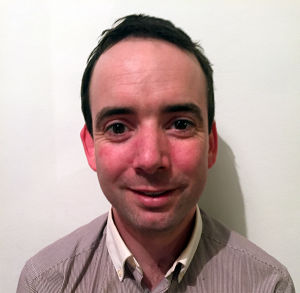Jeremy Byrne — February 2015 Member Spotlight
 How did you get into business relationship management?
How did you get into business relationship management?
I worked my way around the technical teams within the IT Department at the University, moving from Desktop Support to Developer to Server Administrator. With always having an emphatic view point, I was often the point of customer engagement and ended up in an account manager role where I was managing, selling, invoicing and reviewing the services that we delivered both internally and externally. At the same time, I was completing my Master’s Degree in Management and Leadership in Higher Education, which was giving me more skills in strategic management and business convergence. It was then that I noticed a gap that needed to be filled with a more in-depth business relationship management role than defined by ITIL®. After researching for better alternatives, I adopted the Business Relationship Management Institute’s definition of the Business Relationship Manager role and completed the specialist training to help me.
What do you love most about business relationship management?
I love being able to solve problems and add value to areas of the business, especially to those who have always suffered from lack of engagement with the IT Department. It’s always refreshing for those involved to work together, listen to each other, and formulate a plan to improve business value which effect the business, IT partners, and in turn, the end customer (in my case the students). I feel there is a lot of job satisfaction to be had in this role, I just wish I had more resources to meet the business demand and to be able to move more quickly. We are not yet operating at the strategic partner level with a majority of our partners, but that is something I am looking forward to the most.
Where do you draw inspiration from, for work?
I get inspiration from many sources within the University. We have inspirational leaders who have a clear vision that we are all contributing to help achieve. I’m also inspired by fellow Business Relationship Managers, which makes BRM Institute such a good resource for me. It’s great to hear from people who have achieved the strategic partner status after putting in the groundwork that we are currently undertaking and are now achieving some really exciting benefits.
How do you handle demand management within your organization?
We handle demand management through prioritization of projects and resources, which, depending on the scope, are decided at differing levels of governance through committee meetings and senior management groups. In my role, I help write the business cases with the partners to inform these groups of the work required and the impact it will have in the best possible way, so they can make their decision easily. We know when the peaks and troughs are in our business, as every summer we lose 5,000 end users as the students graduate and every September we gain 5,000 more as the new undergraduates enroll. It certainly proves challenging when they come with three or more devices they want to integrate with our systems on day one!
What do you value most about your BRM Institute membership?
The high quality and depth of resources available are really useful. Before I signed up, I saw a few snippets via LinkedIn and I was worried that once I signed up there wouldn’t be much more than I had already seen. Luckily, I was very pleasantly surprised to find a virtual treasure trove of information. I have spent hours reading and I have incorporated many of the ideas into my day-to-day role of being a BRM. The other huge benefit is the community of people on there, helping and advising on all issues relating to BRM. This network of people is invaluable and I hope to build up on my professional relationships I am making through the BRM Institute.
When you’re not working, what do you like to do?
When I am not working I love to spend time with my family, cooking, taking long walks in the English countryside and traveling to exotic locations to experience new cultures and food. Holiday destinations are mainly picked by the food they have. I’ve been to over 30 countries and I’m still hungry. 🙂